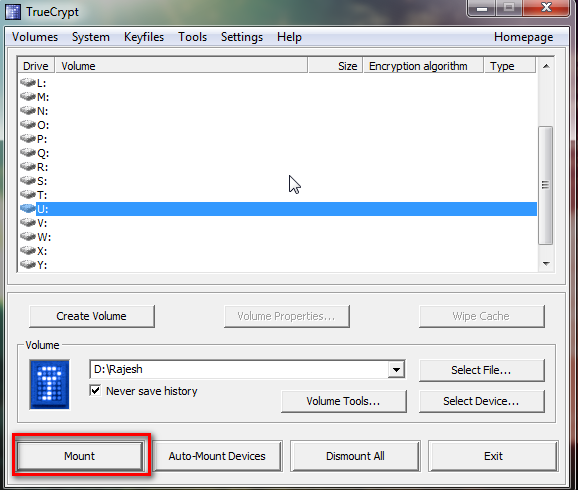
In such a case, create a new TrueCrypt volume and move all files from the old volume to this new one.
#Truecrypt keyfile password
If he does, he may be able to decrypt your volume even after you change its password and/or keyfile(s) (because the master key does not change when you change the volume password and/or keyfiles).

Step to reproduce: PRE: USB drive with truecrypt volume. With truecrypt volumes it thinking a lot of time and then prompt dialog. Create a new encrypted TrueCrypt volume on the device specified by -device. It supports the following commands, each with a set of options detailed further below: -c, -create.
#Truecrypt keyfile full
If you are not sure whether an adversary knows your password (or has your keyfiles) and whether he has a copy of your volume when you need to change its password and/or keyfiles, it is strongly recommended that you create a new TrueCrypt volume and move files from the old volume to the new volume (the new volume will have a different master key).Īlso note that if an adversary knows your password (or has your keyfiles) and has access to your volume, he may be able to retrieve and keep its master key. 'Cache passwords and keyfiles in memory' is working in 1.19 as expected with all volumes, but in 1.22 it working as expected only with veracrypt volumes. The tcplay utility provides full support for creating and opening/mapping TrueCrypt-compatible volumes. If an adversary is allowed to make a copy of your volume before you change the volume password and/or keyfile(s), he may be able to use his copy or fragment (the old header) of the TrueCrypt volume to mount your volume using a compromised password and/or compromised keyfiles that were necessary to mount the volume before you changed the volume password and/or keyfile(s).

The keyfile will be deleted from the iOS keychain.Note that the volume header (which is encrypted with a header key derived from a password/keyfile) contains the master key (not to be confused with the password) with which the volume is encrypted. If you want to delete a keyfile from Disk Decipher, simply swipe from right to left on the keyfile you want to delete, and tap the Delete button that is presented. You can also import multiple keyfiles in one operation by using the multiple select featureĪfter importing a keyfile, you can use the keyfile by simply selecting it when mounting a TrueCrypt/VeraCrypt container. TrueCrypt/VeraCrypt keyfiles are hashed using the TrueCrypt/VeraCrypt keyfile algorithm, the resulting 512-bit hash is stored in the iOS keychain. Open the context menu on the keyfile (long press on iOS, right click on macOS) and select "Import Keyfile".ĭisk Decipher uses the iOS keychain to store the keyfile. To transfer your keyfile encrypted to Disk Decipher, store the keyfile inside a TrueCrypt/VeraCrypt container and open the container inside Disk Decipher. To use a keyfile, the keyfile first needs to be imported into Disk Decipher. If you need keyfile support for other disk formats (FreeOTFE, LUKS) let me know.

Also, like TrueCrypt, FreeOTFE can be used to hide one encrypted volume.
#Truecrypt keyfile zip file
zip file with an easy-to-remember password and using a computer with ZERO connection to you, upload it to the cloud (Gmail would work) and put it into a new account with.

Version 1.9 adds TrueCrypt and VeraCrypt keyfile support to Disk Decipher. TrueCrypts keyfile for a volume can be any file at all, since its used in a. Choose the default as we will not use a keyfile in this exercise.At this point your screen should look similar to. With important data such as yours being protected by TrueCrypt, I would take a header backup, your keyfile, and your password in plain text and place it in a simple.


 0 kommentar(er)
0 kommentar(er)
